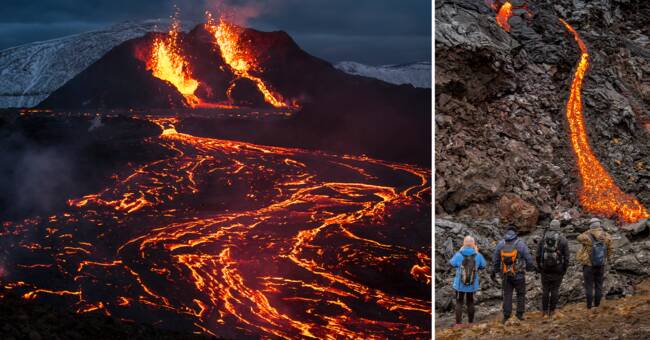The volcanic eruption in Fagradalsfjäll in Iceland has become a tourist magnet.
The area is located only about 40 km southwest of the capital Reykjavik and is relatively easily accessible.
Since the eruption on March 19, tens of thousands of curious people have come to the area, and now there are plans to expand roads and hiking trails near the volcano, reports Swedish Radio.
Relatively safe outbreak
The eruption in Fagradalsfjäll is relatively safe to witness even at relatively close range.
But otherwise volcanic tourism can be life threatening if you do not have full control over what to do.
- If you have basic knowledge, you can watch outbreaks quite safely.
We are lucky, because the most beautiful eruptions, such as in Hawaii, Iceland and the Italian Stromboli, do not belong to the most explosive at the same time, says the American geologist Rosaly MC Lopes to National Geographic.
However, she warns against relaxing and not following the advice.
When Etna in Sicily had an outbreak in 1987, two close spectators died.
And in 2019, more than 20 people lost their lives and many were badly burned when the White Island volcano, Whakaari, in New Zealand erupted.
"Perfect tourist attraction"
Those risks are not believed to exist in Iceland, where new routes are to be built.
For Fagradalsfjäll, lava is believed to spew out for a long time, probably longer than the ongoing corona shutdowns.
The most recent eruption in the area, 800 years ago, lasted for 30 years.
- It is a perfect tourist attraction, as long as you do not go too close, says volcanologist Thorvaldur Thórdarson at Retill Sky and compares with Pu'u 'O'o in Hawaii, whose eruption in 1983 lasted for 35 years.
- It may end tomorrow, or it will last a couple of decades.
This type of volcanic tourism is not unique to Iceland, on the contrary, a large number of places with volcanic activity have seen an influx of tourists after eruptions or only suspicions of eruptions.

